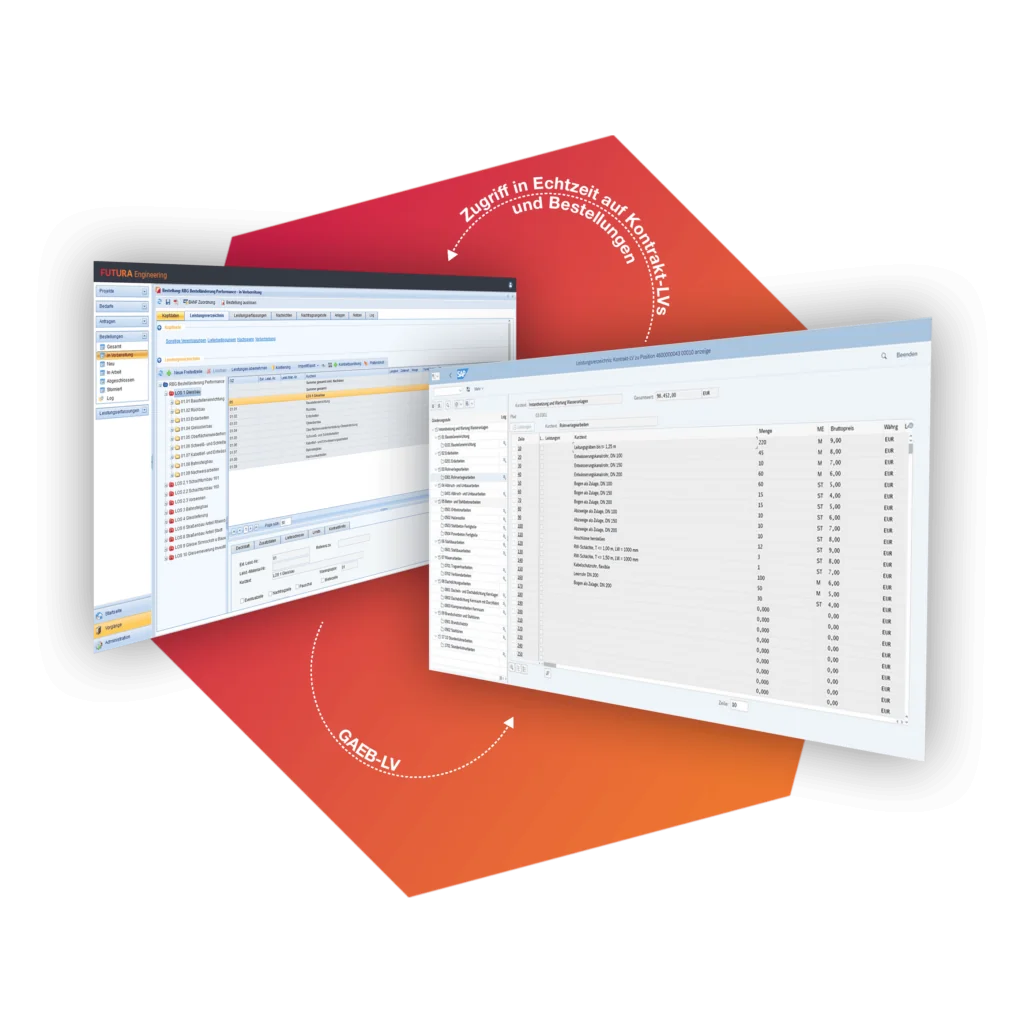
GAEB standard in construction and project purchasing
The complexity of technically demanding infrastructure and construction services increases the effort required for sourcing. However, orderly request processes based on item lists are like a grueling hurdle race in SAP-based purchasing – whether it is the creation and maintenance of item lists, their uncomplicated integration into the request, or the transfer of offered item lists to S/4HANA.
FUTURA Engineering provides your construction and project procurement teams with tools tailored to their needs for conducting requests
- Building construction / Civil engineering
- Plant engineering
- Energy providers
- Network operators
- Facility Management / Technical building equipment
Work effectively with item lists in S/4HANA
Working with standardized item lists, framework agreements or contracts is the important prerequisite for evaluations and analyses in order to begin the next price negotiations in a well-founded manner.
And the advantage of an itemized transfer of the data of an item list to S/4HANA also becomes apparent in follow-up processes. The decisive factor here is the bridge between the two worlds of GAEB-based item lists and SAP.
Meaningful analyses - better basis for negotiations
- Processing extensive item lists with more than 1,000 service items in a GAEB-based item list requires special functions and performance, e.g., when using the price comparison list.
- Item lists are an integral part of all purchasing documents: Purchase requisitions, requests, quotations, purchase orders, contracts, service entries – so that even complex services can be billed transparently via the SAP system.
- All items of an item list are created as individual service lines in the backend of SAP S/4HANA – and are thus immediately available for follow-up processes (e.g., a service entry).

RFX Management in S/4HANA with GAEB-based item lists
You work with service contracts in SAP and want to update and issue requests for them on a regular basis? The easiest way to do this is for purchasers to access all contracts – including those with item category "D" – directly from the SAP Launchpad and issue requests for them via FUTURA.
If necessary, you can add additional service lines or new suppliers to the request.
Exchanging information in the form of structured data seamlessly – this is also possible ad hoc and in compliance with the industry standard GAEB. All service providers invited to a tender receive their own access to FUTURA.
In your supplier portal, suppliers can view the request and process or submit their offer. For extensive irequests, the supplier can upload and download the item list via a GAEB or Excel file.
The accompanying communication is also integrated into the system. But most importantly: It is easy for suppliers to use and is also free of charge, which ensures a high level of acceptance.
Efficient price comparison list – with individual filters and combined with high-performance processing of mass data. Incoming offers based on item lists can be automatically transferred into a price comparison list in FUTURA at the push of a button and adjusted with individual filters.
You can even map several request rounds in the price comparison list in any way you want.
The possibility to import a GAEB-based item list into an SAP document (e.g. into a purchase requisition) is too short-sighted and does not offer a sustainable solution. The prerequisite for controlling in real time is the transfer of ALL items or service lines of the item list of a purchase order and not only, for example, the header data as 1 "SU" as an aggregated total to SAP, i.e., build 1 piece (SU) of production plant, 1 million euros.
FUTURA® transfers GAEB-compliant purchase orders to S/4HANA at the push of a button – either as a purchase order for services (item category "D") or a service contract (value or quantity contract).
This is the only way to enable transparent billing and automated commitment reduction in the SAP system and to lay the foundation for a meaningful controlling of purchasing.
To ensure that billing or service entries can take place transparently at service line level or even be created as a contract in SAP, the GAEB-based item list must be available in its entirety in the SAP system – and of course it must also be updated and synchronized when a service provider accesses it.
This shortens and simplifies billing processes, which also benefits the service providers: They receive their money more quickly.